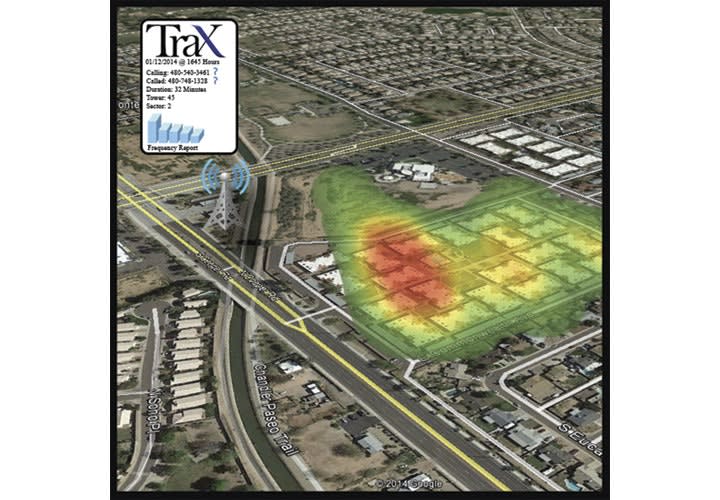"I figured there must be a way to automate that system so that it visualizes cellular records," says Ray. Determined, he taught himself programming so he could develop Trax.
Because he and his colleagues at Zetx have experience building cases with cell phone data, they understand what tools are most helpful to officers. One major component that makes Trax so useful is that it provides a visual of all of the call information from each tower.
Say a subject travels from Phoenix to Salt Lake City and makes 14 phone calls along the way. "Once you get those records, you pop it in the program and in about 30 seconds it kicks out a KML file, which loads into Google Earth and shows all the towers between Salt Lake and Phoenix that were used, in chronological order," explains Ray. "And it will actually animate the process, taking you on a flying visual tour from tower to tower. And each time it displays a tower it will actually display the call information: who called, how long the call was, etc."
Not content to stop there, Ray developed Trax to communicate not just which tower was used and from which side of the tower the call came, but to calculate how far away from each tower a call might have been made. This can help pinpoint the location of a call, which is often key to solving cases. In a densely populated area, one cell phone might use different cellular towers at different times. Trax uses an algorithm that looks at each tower in conjunction with each neighboring tower to determine the estimated coverage area and displays an overlay on the visual map.
Zetx has also developed a way to create an easily understood visual of callers' habits to pinpoint their location over time and on key dates. "We'll have heat maps that will figure out where people spend most of their time [based on where they're making calls from]," Ray says. "And for specific events like a homicide or robbery, the actual cell tower data can show where the events happened."













